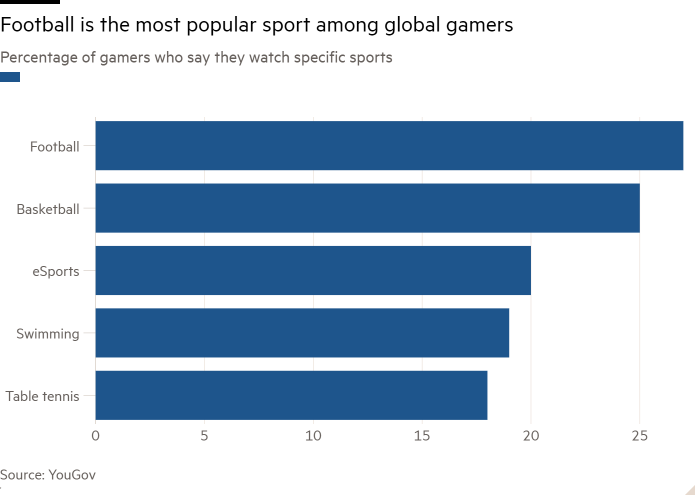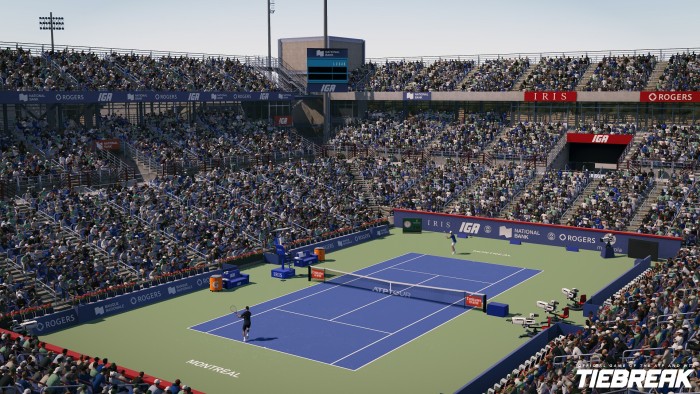For anyone wondering how Spanish tennis sensation Carlos Alcaraz might have fared against Andre Agassi in his prime, TopSpin 2K25 offers gamers a chance to find out.
The latest edition of the popular video game series, released in April — more than a decade on from the much-loved TopSpin 4 — allows users to play as several tennis greats, including Roger Federer, Serena Williams and Pete Sampras.
However, Novak Djokovic fans will have to wait. He instead features as the cover star of rival game Tiebreak, which has the official backing of both the Association of Tennis Professionals and the Women’s Tennis Association, and is due to make its debut on consoles in August.
The arrival of these two new competing games is a sign of how tennis executives are seeking to emulate the success of other sports in reaching a huge global audience of young people through video games — and then converting them into fans of the real-life events.
“Our games are often the first touchpoint to a sport for many consumers,” says Bryce Yang, senior director of franchise and partnership strategy at 2K, the US video game publisher behind the TopSpin series. “If consumers then go play or watch tennis in real life, and we can be a part of helping grow awareness or engagement of the sport, then it’s ultimately great for all involved.”
EA Sports FC, the football video game, is the most successful franchise in gaming history, and its 150mn-plus users worldwide demonstrate this engagement factor. According to research conducted by its maker, Electronic Arts, playing the game increases the likelihood of someone buying a match ticket by 18 per cent and playing football by around a third.

The new gaming push in tennis comes as younger audiences increasingly switch off from live sport on television. Research released last year from YouGov showed less than a third of sport fans aged 18 to 24 watched live matches, compared with three quarters of those 55 and over. Many sports industry experts see gaming as a vital tool in helping turn young people into avid viewers.
“I think those that have a strong sports game — either mobile or console — and a strong gaming presence will win significantly. We’re already seeing that play out”, says Gareth Balch, founder of consultancy Two Circles.
The International Tennis Federation, the Association of Tennis Professionals, the Women’s Tennis Association, and the four Grand Slam tournaments have all previously teamed up with Tennis Clash — the hugely successful mobile game that has been downloaded more than 150mn times.
Through these collaborations, the game itself offers new features during each Grand Slam — for example, allowing users to play on grass during Wimbledon, but switching to blue hard courts once the US Open gets under way. Players can also win themed outfits, bags, and tennis rackets for use in the game. During this year’s French Open, top Tennis Clash players even competed for €5,000 in prize money in the Roland-Garros eSeries.
Three of the Grand Slams now also have a presence on Roblox, the online gaming platform popular with primary school-age children. More than 70mn use it daily.

Inside WimbleWorld, users can try out a number of mini-games such as mowing the lawn, hunting for treasure around the grounds of the All England Club, or meeting a cartoon avatar of former Wimbledon champion Andy Murray. So far, it has attracted 17mn visits since launching in 2022.
AO Adventure, which appeared on the Roblox platform during last year’s Australian Open, has proven even more popular, with more than 19mn visits so far, and a collaboration with the Minecraft game is coming soon. The US Open followed suit last year with its own Roblox game: Champions of the Court.
“We’re really learning, year by year, how to engage, excite, surprise and delight these kids”, says Usama Al-Qassab, marketing and commercial director at the All England Club. “We’re building mini-worlds within these worlds. And that complements all of the other work that we’re doing through live TV, digital and all of those other touchpoints.”
For older children and teenagers, tennis rights holders have been looking to grow on Fortnite, another gaming platform with more than 500mn registered users across the globe.
The Australian Open has partnered with Fortnite to host an annual gaming tournament, with a $500,000 prize pot. During AO Summer Smash, professional gamers compete in Fortnite’s signature “battle royale” format, in which they try to eliminate each other using scavenged weapons. The head-to-head duels are beamed live around the world on the AO Twitch and YouTube channels, with the players themselves taking part while sat on the court, inside Melbourne Park’s Rod Laver Arena.
“We recognise the potential of gaming as a platform to engage with younger, tech-savvy audiences who consume sports and entertainment in innovative ways”, said Ridley Plummer, Tennis Australia’s senior manager of digital sales and metaverse. “Gaming also allows the AO brand to live year-round on platforms that exist 24/7, 365 days per year.”
Race to Wimbledon, which landed on Fortnite last year, allows players to run, drive or fly their way across London to reach the All England Club, while trying to outpace giant rolling tennis balls and strawberries. The US Open is due to launch its own mini-game on Fortnite, later this year.
But these new channels are not designed to be major direct drivers of revenue — the online games are typically offered for free. Instead, the loftier goal is to help educate young people about tennis, its top stars, and its most prestigious tournaments — in the hope of creating enthusiastic future fans that will attend, or tune in, when the action starts.
“Digital channels are an on-ramp for people to then go and watch live on TV”, said Al-Qassab. “We look at them as ways to engage and create meaningful relationships. We can then continue to engage for many years to come.”






